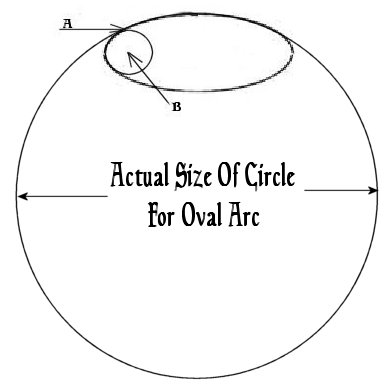Fig 1.

A second aspect of angular momentum that is involved is that of rotation. The ball is on the end of the string. The outside of the ball is traveling faster then the inside. It has more momentum. The knife can be thought of in the same way. When you move your arm in an arc, the end of the knife closer to you is going slower, less momentum, then the end thatís away from you. If the object is then released, it will spin because one end has more momentum then the other. One way to illustrate this is to tie a string to the end of a long object such as a stick, about ten inches or less with a fifteen inch string is fine. Swing the item in s circle over your head. When you release the string, there will be no other significant forces on the stick besides the momentum. You may think it would go straight. However, the stick will spin every time. Youíll also notice something else interesting. If you increase the diameter of the arc by increasing the length of the string, the stick will spin slower. This is because the speed of the spin is proportionate to the difference in momentum between sides.
With a larger arc, there is less difference and thus, less spin. Keeping this in mind, you can increase the rate of spin by decreasing the diameter of the arc or decrease the rate by enlarging it. This is important because the blade needs to turn itís half turn between the release point and the target. This means the rate of spin has to be controlled. The size of the arc is one way to control that.
Fig 1.
Fig 1 represents a base arc with which to do our comparison. It would be a normal wide through in a circular arc with the elbow almost extended.
Fig 2.
Fig 2 is a smaller arc. If all other factors remain the same, it will produce a faster rotation of the released object making it appropriate for closer distances. It would be a throw with a much tighter circle, as if the elbow is kept slightly bent.
Fig 3.![]()
Fig 3 is actually half an oval. However, the arched area where the object would be started and released would make up a much larger diameter to the arc. This is appropriate for longer distances. It is more of thrusting motion with a follow through.
Fig 4. 
The oval can cause a slight difficulty. The release and clearing of the object thrown must be before the significant change in the diameter of the arc (Fig 4 A). At this point, the arc followed would belong to a much smaller circle (Fig 4 B) and cause the object to spin much more rapidly. Most often, the knife is released in plenty of time, but the blade does not clear because of "Choke" (below) until after the new arc has started.
Fig. 4a

The oval arc is actually just part of a much larger circle. The larger the circle, the slower the rotation is. This has to do with the difference in momentum energy on one end of the knife compared to the other. Lets take 50 as the base energy put into the throw. If the circle is only 3í radius, then that 50 is spread out over that distance. If you draw 50 even spaced lines, and label them all, then the blade point may be at 35 while the end of handle is at 50. This gives a difference of 15. Yet, if the radius is enlarged to say 15í and the same evenly spaced lines are put there, the point of the blade may be around 47 while the end of the handle is at 50, giving it a difference of 3. Less difference means less spin. It follows the law of angular momentum. The end of the angle/arc will have more energy then in closer. Just as if you have two plungers pushing on each end of a stick, if one is not the same as the other, one end will go ahead and end up rotating around the balance point. Thus is the need for a larger arc. The oval is just to get the big radius normally not possible with normal length arms.
Given what is known, it would be logical to conclude that if more energy is put into the arc initially, the spin would be faster. Therefore, a harder throw would yield a faster turn. This is true. However, the thrown object also moves toward the target faster. This may not be a constant relationship over a longer distance or great increase in power. But, within the eighteen feet I was throwing from and the different rates I was able to throw, the amount of turn to the target appears to be the same no matter how hard the object was thrown. Therefore, itís safe to say, the energy put into the throw is not a significant variable in the amount of turn the object makes before striking the target, at least not within the distances weíre dealing with.